Continued from Travel Thailand – Laos: Day 9 – Part 2 – 14 October Memorial & Democracy Monument. For pre-travel, please refer here.
A deity in Buddhism.
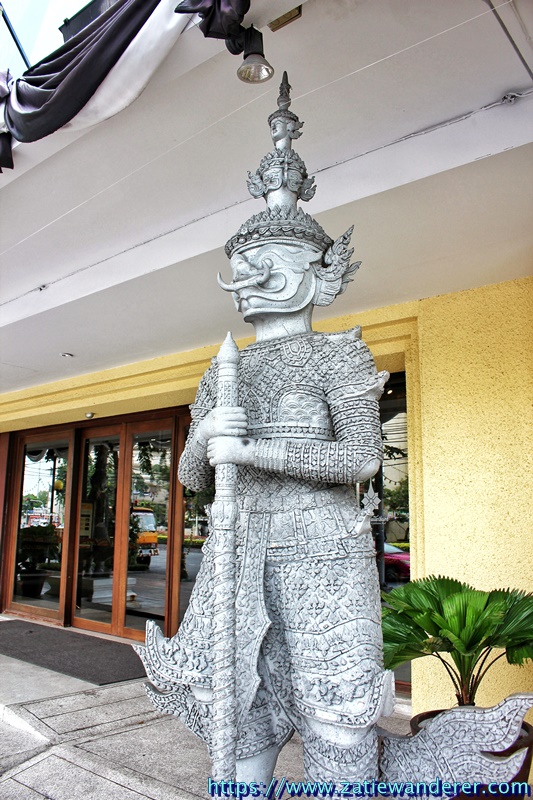
At this point, it is only 12.20pm according to EXIF data from the photo. My main problem with the date in the photo is that I forgot to set the clock on the Canon EOS camera according to the local time which is an hour earlier than Malaysia. Only the time on the mobile phone is accurate because it will synchronize with the telecommunication tower.
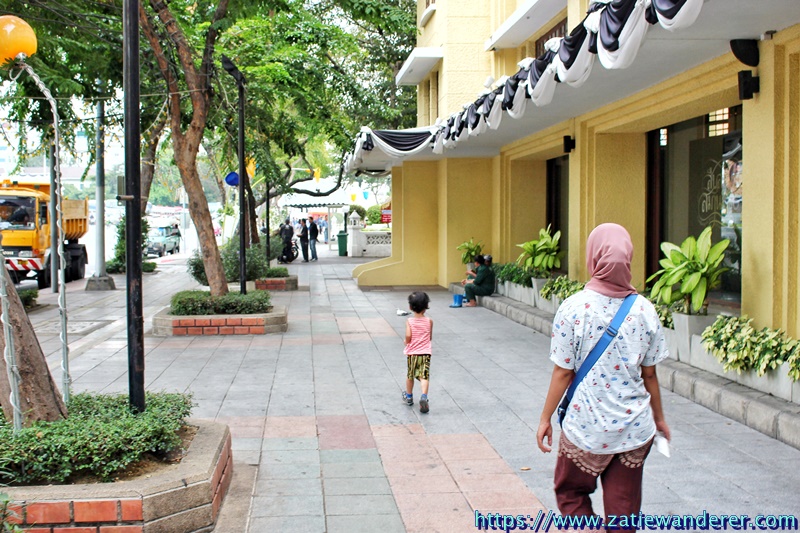
We have arrived at Wat Ratchanatdaram Woravihara. At first, we felt lazy to go in because I thought there was nothing interesting there. So, we took a picture on the outside as a memory.
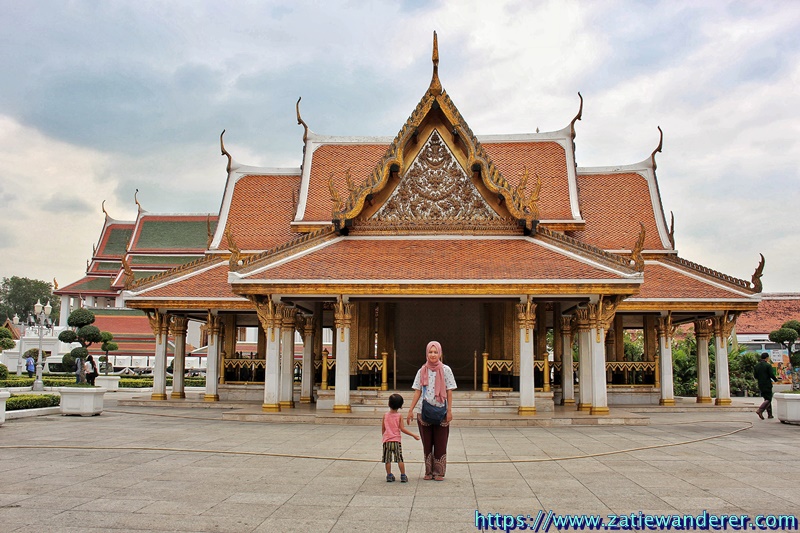
Our travel distance from the Democracy Monument is 400 meters.
And we went back out to the pedestrian walk while observing the behavior of the truck spraying water towards the trees and plants around. The one who was fun enough was Aqif because it was strange to see a rather large fountain with a long reach.
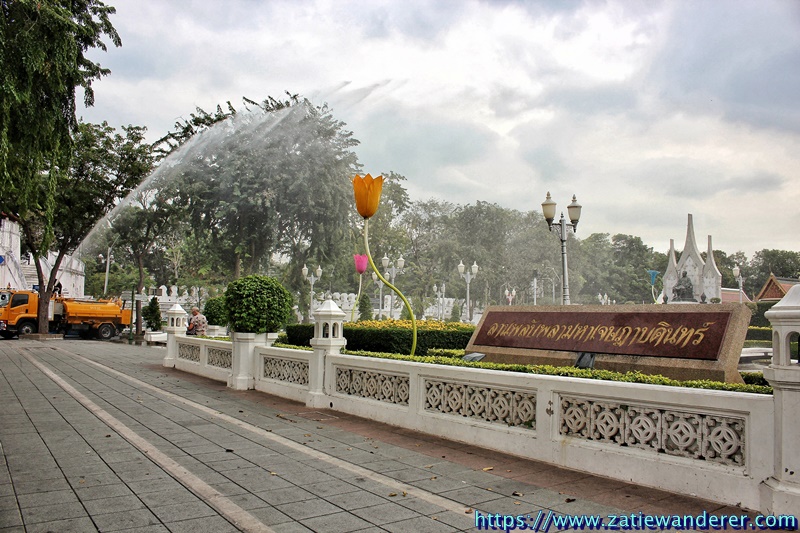
While looking at the water truck, I just noticed that the Wat building with the gold roof was very popular. Apparently, the front part is just a facility if any religious event is held for the public.
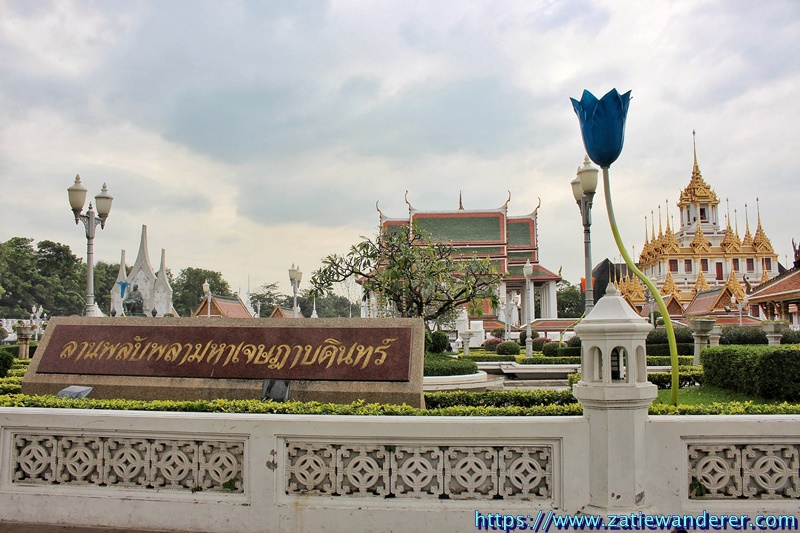
That is the golden roof that for me is very unique in its construction.
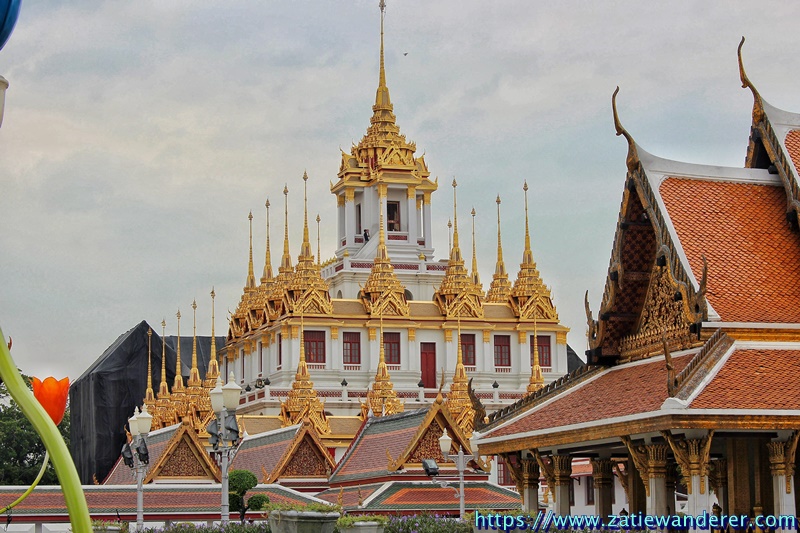
The truck moved closer to us.
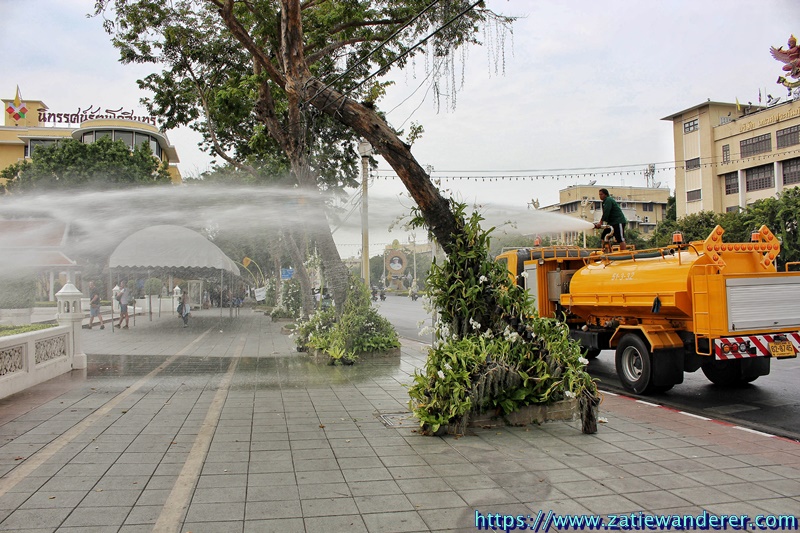
It squirted water over my head. Take a look, the spray water is far away. At this point, I’m still thinking … do we have to go into that golden roof wat or not?
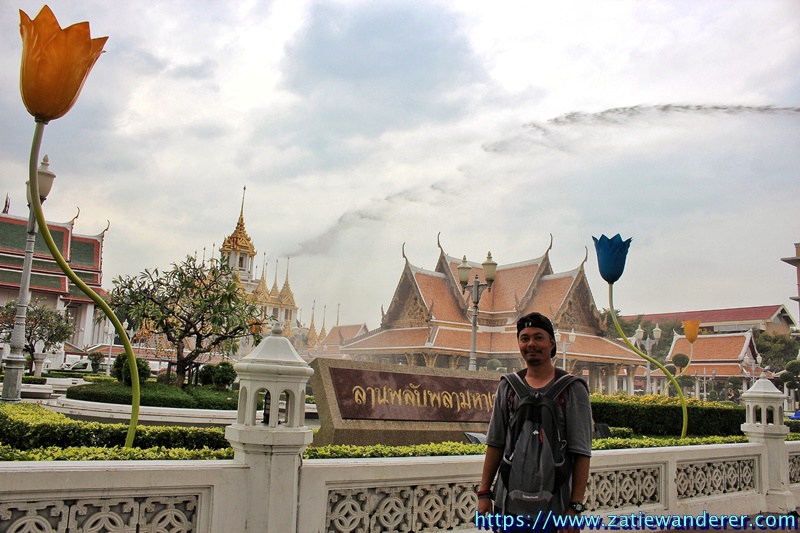
Ok, to the knowledge of the reader, here and its surroundings are famous tourist spots apart from The Grand Palace area. There are also many historical sites here. Do you see the direction to the Golden Mountain? That’s my favorite Wat. The blog post about it will follow after this.
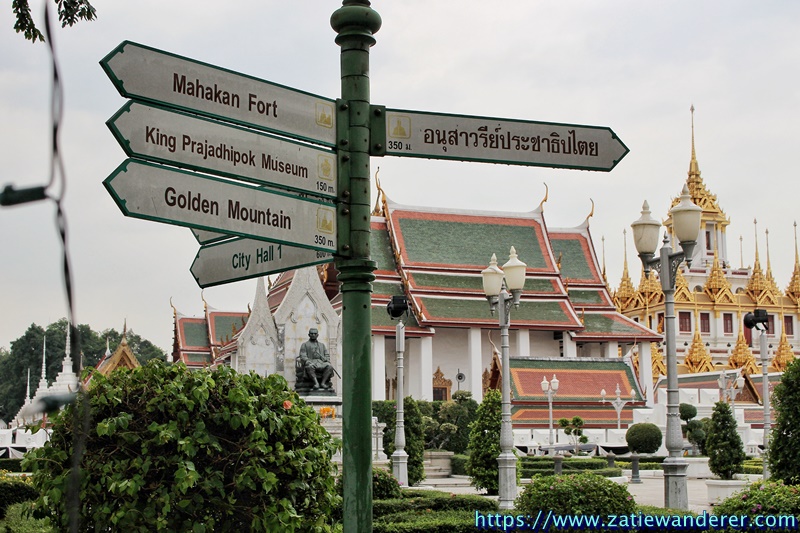
We stepped around the outside of the area without going into the garden section. This is still about whether to enter or not.
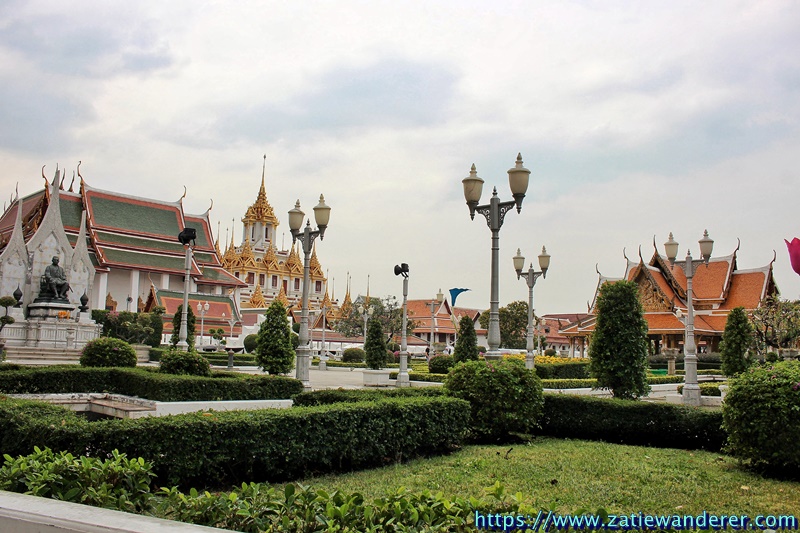
This is the fort of Pom Mahakan. I’ll tell you below later.
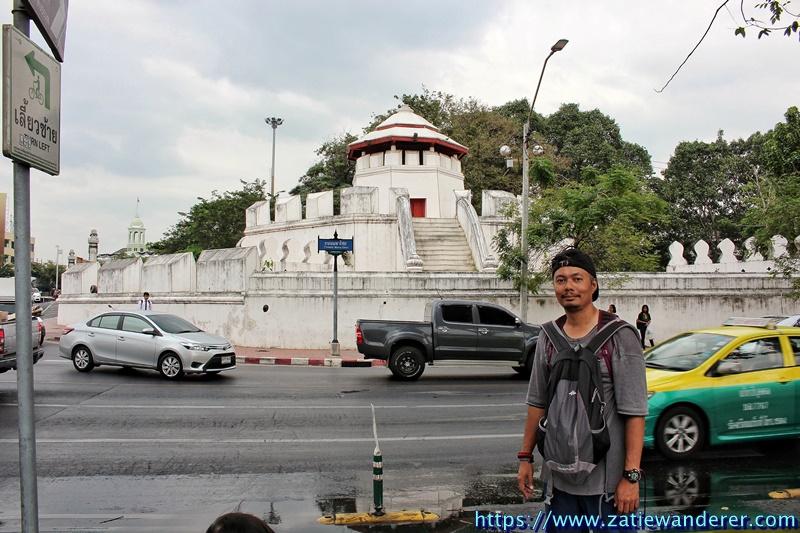
Enjoy the exterior first. This is a statue of King Rama III (memorial site) during the Chakri Dynasty. King Rama III or known as King Nangklao is considered to be a king who ruled well and was also a businessman. He often carried out trade missions with China.
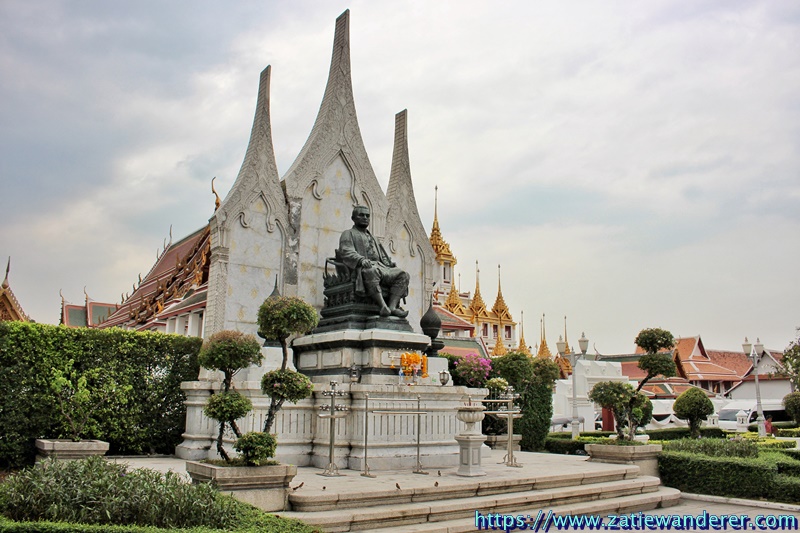
As we stepped on the edge of this area, we suddenly saw a path to enter leading to the golden-roofed Wat. Oh, this is apparently a gathering place for tourists. Can be identified by the rows of minivans, buses and tuktuks that were parked here.
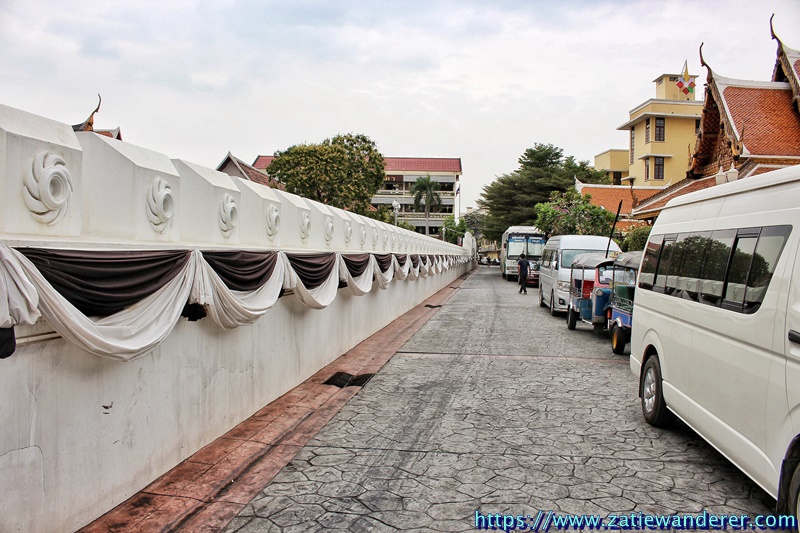
We entered through here. It’s fun because the doors and walls are like a movie with the background of the ancient kungfu city in China. If I’m not mistaken, there are props similar to this wall in the movie Ip Man. At that end is the direction we enter from Pom Mahakan.
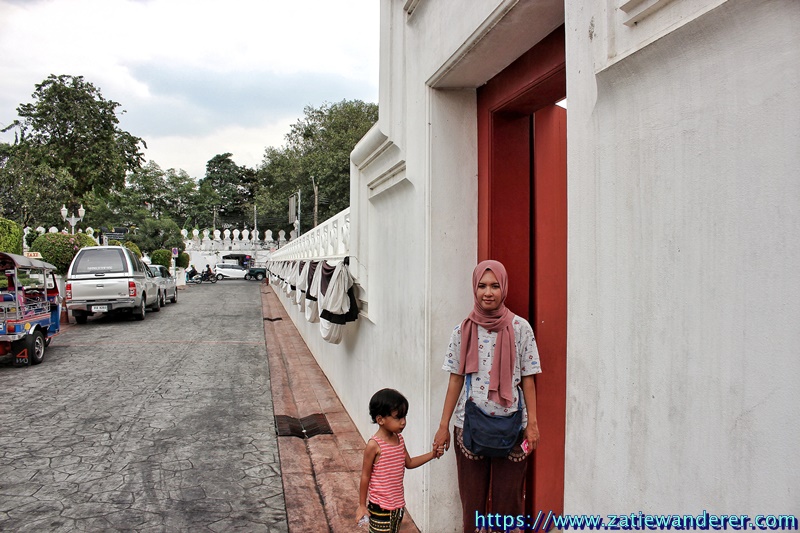
That’s my favorite Wat architecture! Every single one of those golden roofs is actually a stupa. At the stupa, we can see the order of their spiritual attainment from the lowest level to the highest level which is a union with the Buddha (has ‘become’ Buddha) and it is called having attained ‘enlightenment’. Their ultimate goal is to achieve ‘nirvana’ which is a transcendent state in which the human being is free from worldly diseases such as pain, misery, escape from the cycle of death and life that is ‘recycled’ (reincarnation) and united with his Buddha.
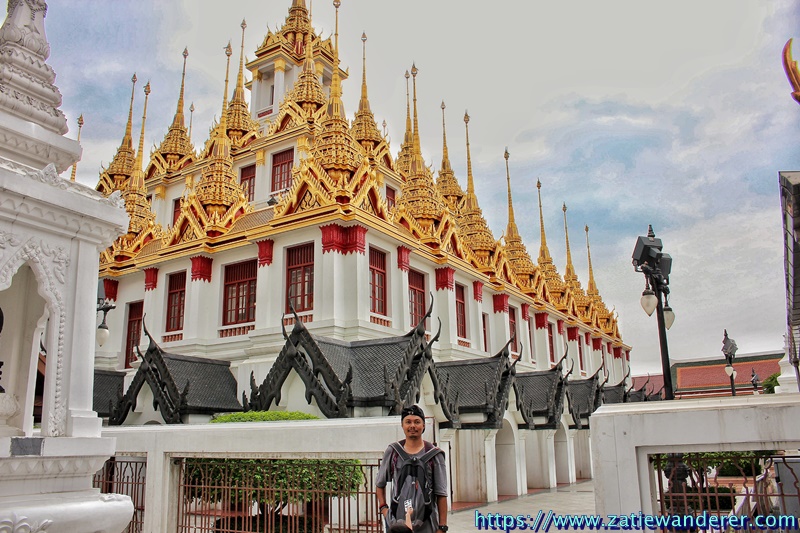
Buddhism is actually a philosophical religion and in fact, it was not a religion at first. However, after thousands of years, due to longing for the monks who taught them, a statue was built to represent the monk. And this is where the starting point of the original beliefs comes into play which shifts to a new belief that I feel, if their monks are alive maybe their followers will be scolded. Why?
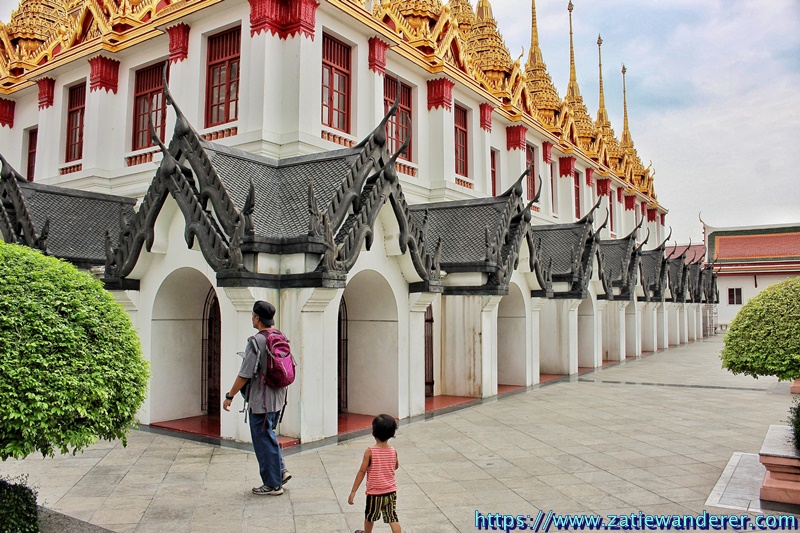
This is the starting point of the incident caused the statue to be idolized and adored to this day. In fact, some monks are raised to become a deity. Deity, on the other hand, was later elevated to the rank of God. And then, it becomes a religion with many gods.
Every monk in the old days may have something sacred, for example, to protect a village. So, the monk who has died is appointed as the god of salvation. Some monks excel in the matter of sustenance, then be the god of sustenance. As I said earlier, if their monk was still alive, perhaps his followers would be scolded for the original goal of uniting with the Buddha and escaping misery unattainable and in vain.
We kept stepping to enter this place known as Loha Prasat.
Entrance to Loha Prasat. There is no charge. If there are readers of this blog who are Buddhists, you can donate here.
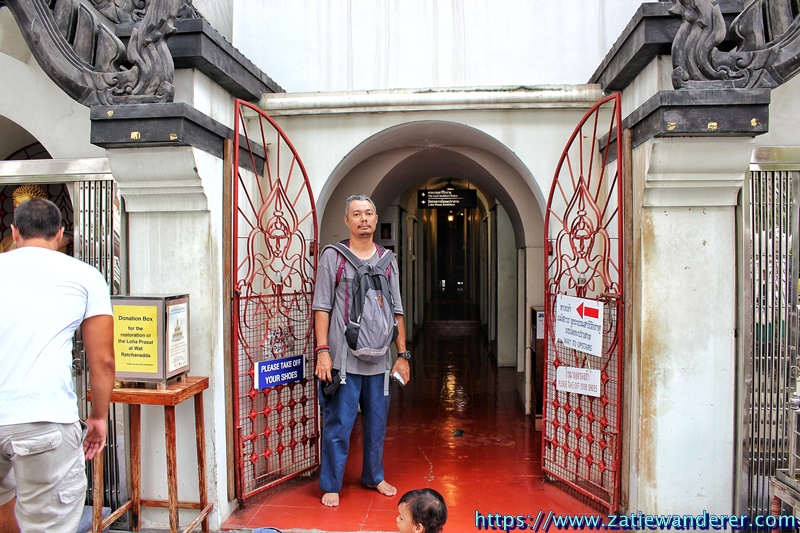
Loha Prasat is not a temple or Wat as it only houses ancient Buddha statues and monks. There are also statues of beings from the underworld carved here. Most likely, there is a storage place for the ashes of a monk who has died before.
The uniqueness of Loha Prasat is that it has many corridors, hallways and rooms. We can go up to … if I’m not mistaken, the 3rd floor.
The stairs that connect the floors are all spiral types. This is also unique for us. If wanting to visit, don’t forget to arrive before 4.50pm as it is closed at that time. It is recommended to spend between 30-45 minutes here.

We climbed the stairs, but not up to the second floor, but continued to the open-air roof area.
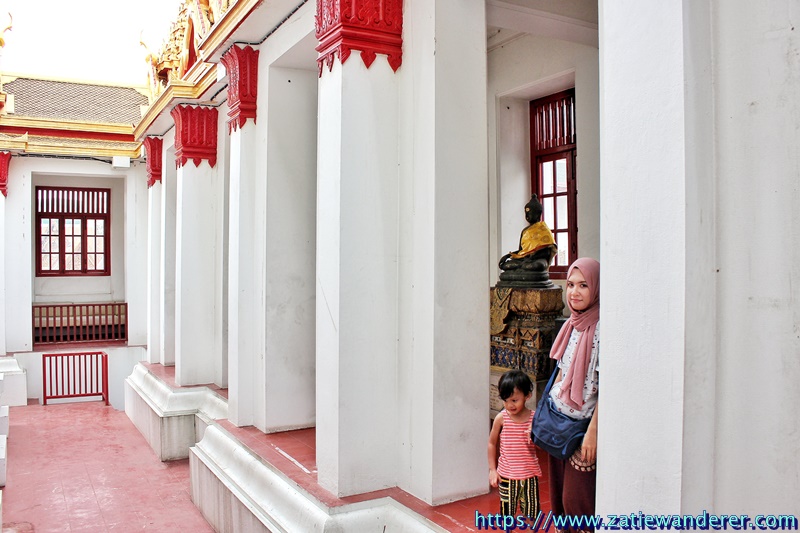
Then we went through the corridors found here. Looks like a lot of statues.
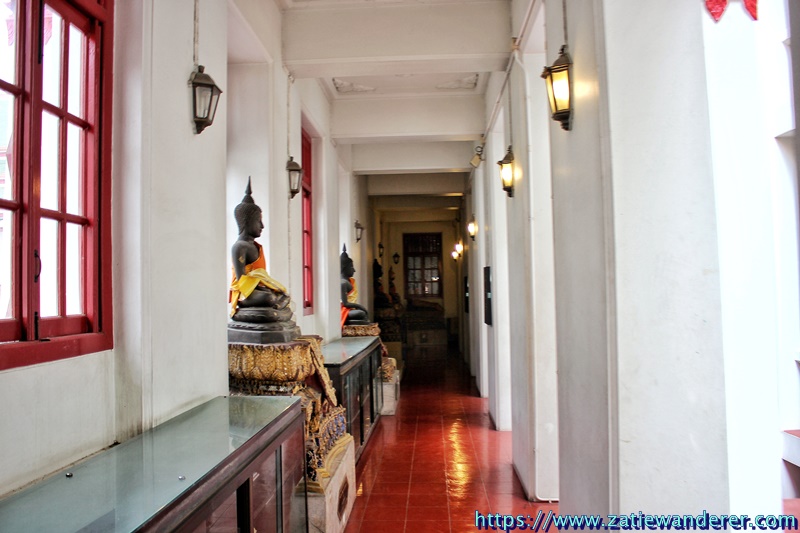
The statues here are for storage only and not for worship because I don’t see any plugs (colok), plug containers and so on here. Sofas are also provided for relaxation.
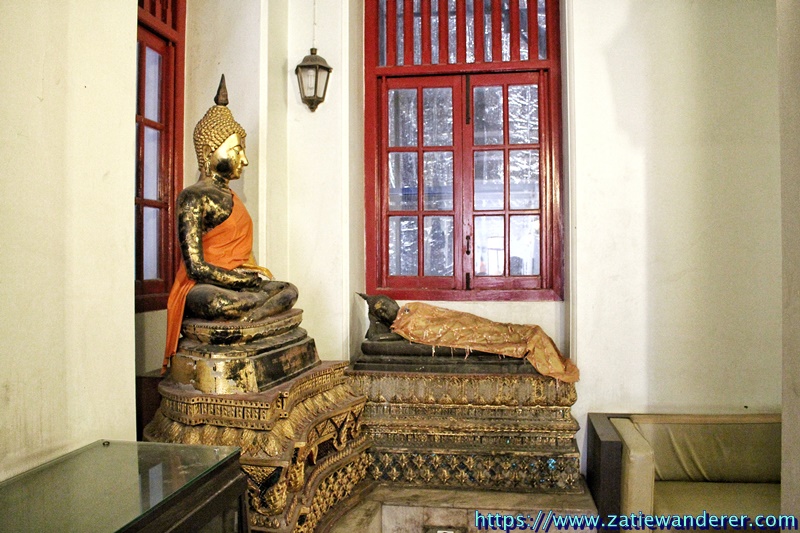
If observed, the statues here are deliberately dressed in orange or yellowish monk clothes. To my left, there is a black information board nailed to the wall. There are many similar boards along the corridor.
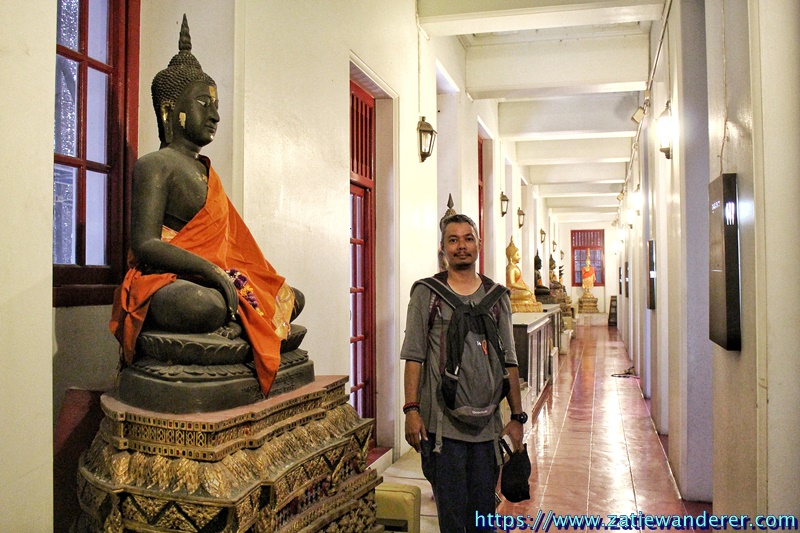
This board represents excerpts of philosophical words from the Buddha. There are also many boards that I peruse and read because they explain a lot about the journey of human life. This is all just knowledge for us.
The only buddha statue ‘shackled’ with a seven-headed serpent. Many versions are interpreted about this statue. In my opinion, snakes are not disguised genies who teach monks. But the serpent represents the lust or incitement of the devil. So, this statue shows the resilience needed to be a monk who wants to achieve union with the Buddha. The further towards unity, the stronger the interference from the devil and satan.
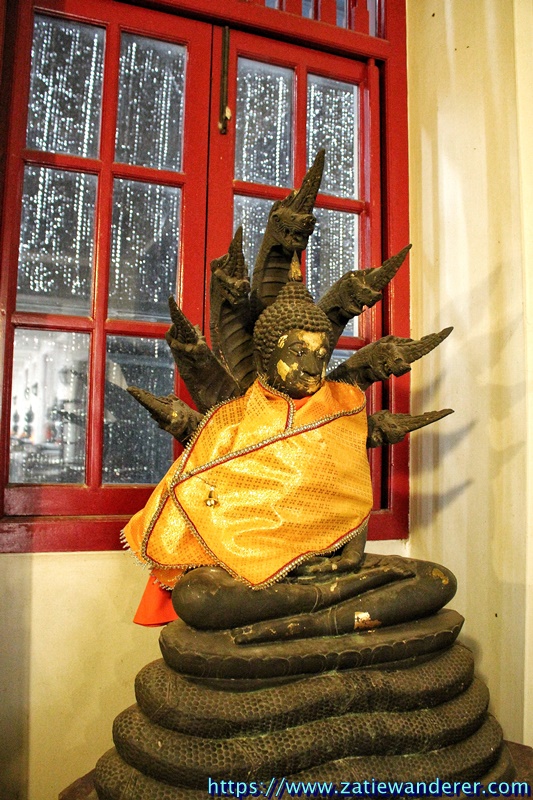
But ..
There is also an opinion that this ‘serpent’ category creature carries the meaning of ‘wisdom’ in the mind of every spiritual practitioner.
On the other side of the corridor.
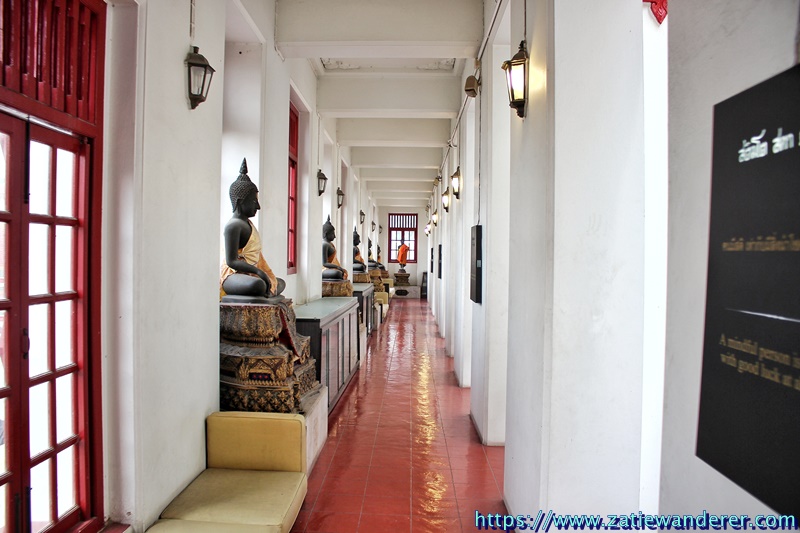
Apparently, I just noticed, we only visited the 3rd floor which is the top floor. Somehow, I forgot …. either we forgot to go to the second floor or indeed it was closed to the public. Anyway, the 3rd floor is more than enough.
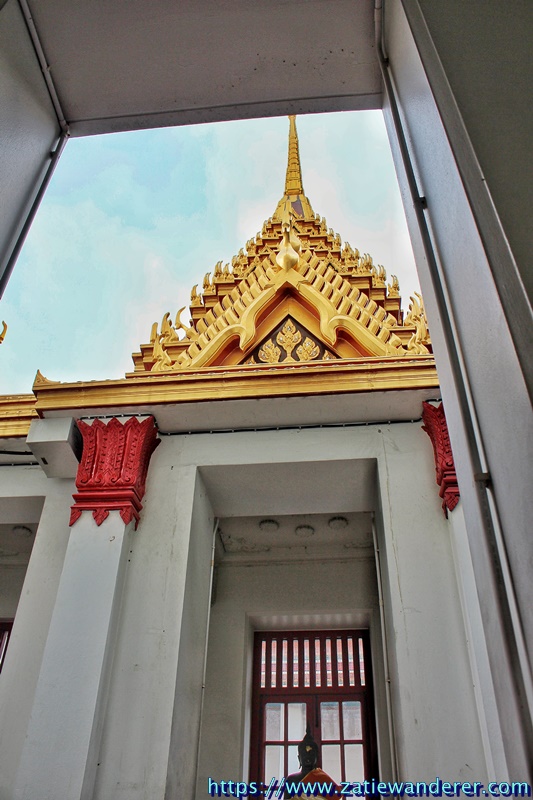
Oh, the view from here is so interesting because finally, we were close to its golden roof.
Record our arrival here with the note ‘Know Yourself’. Yes, know yourself because the beginning of the religion is to know yourself which will then know God.
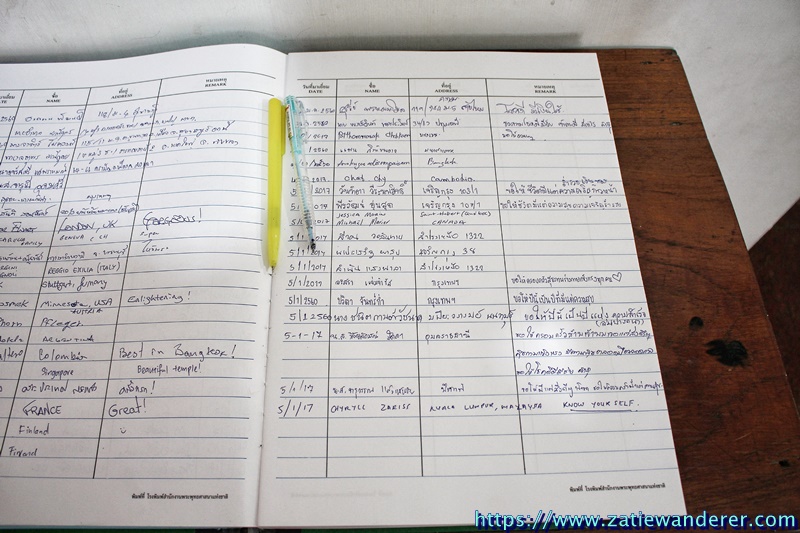
Loha Prasat is one of the buildings in the whole area called Wat Ratchanatdaram Woravihara.
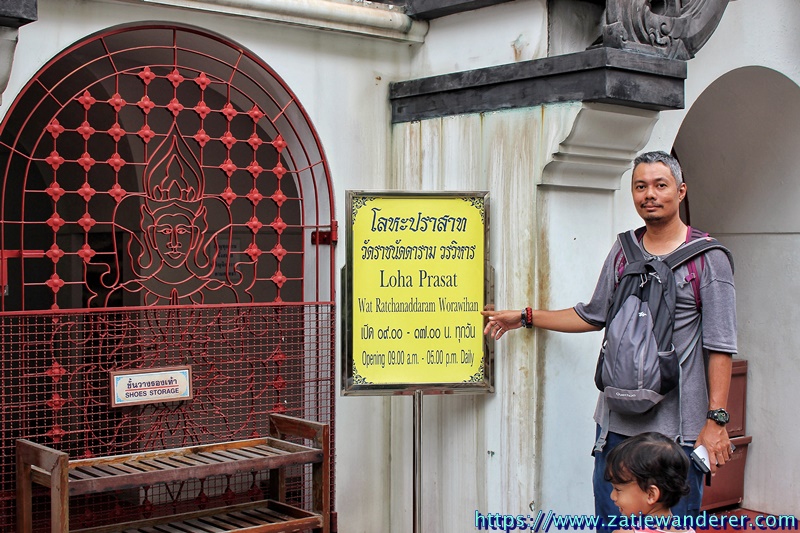
This is located opposite the front entrance to Loha Prasat. I also want to know what a star with 8 vertices means.
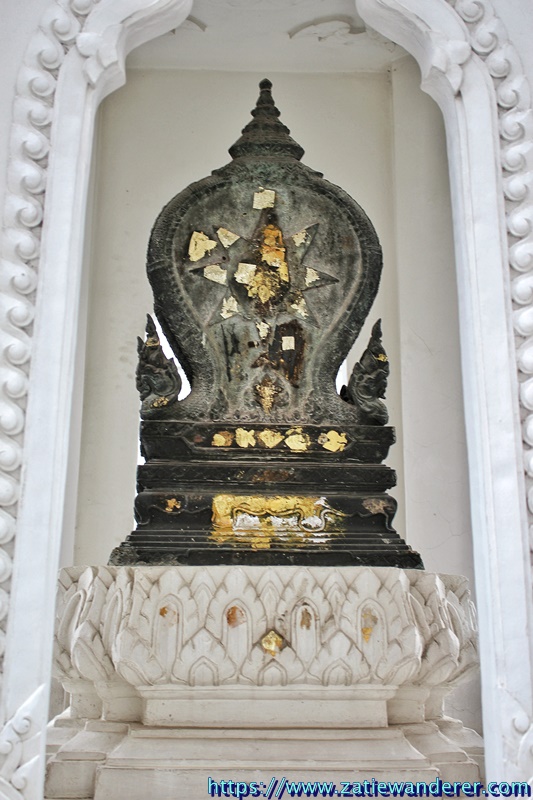
And only then did we visit the main Wat section which is indeed famous on Tripadvisor.
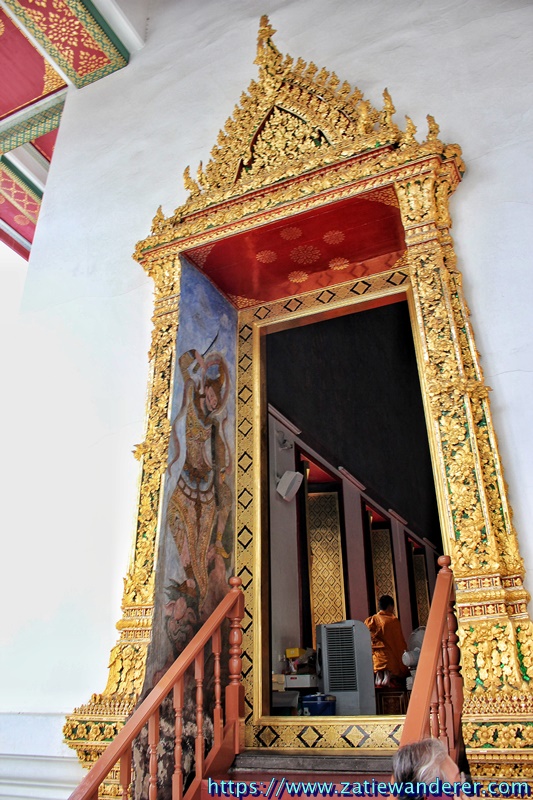
What am I interested in here?
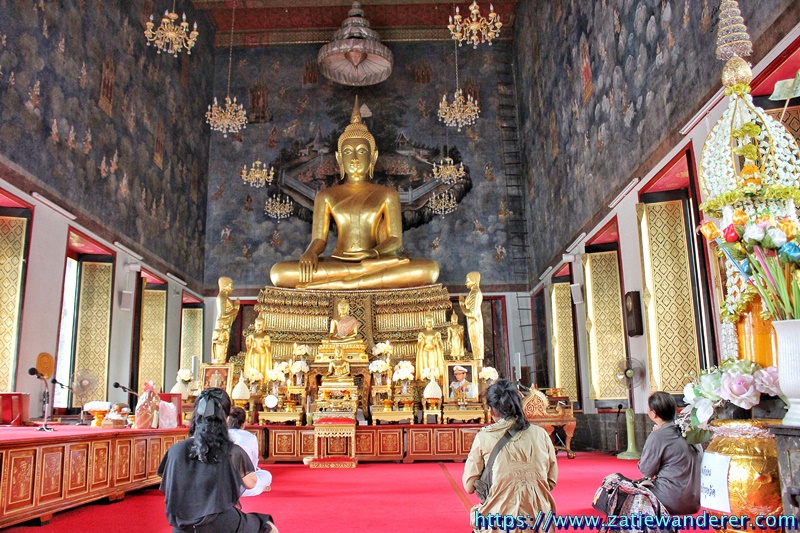
Look at the art of painting on the ceiling. Looking at many of his followers flying towards someplace reminds me of M. Nasir’s song, Tanya Sama Itu Hud-Hud.
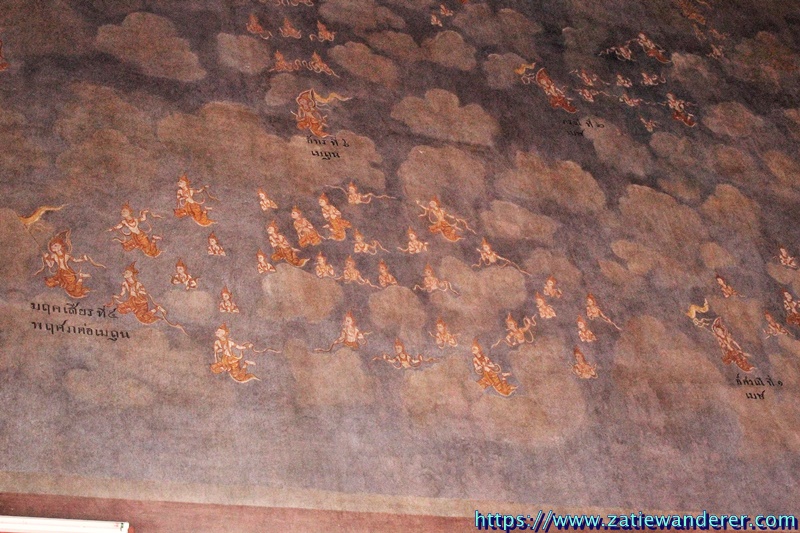
Seventy-three doors
Seventy-three ways
That goes only one way
Thousands of wildlife
Looking for the king of Muraq
Only thirty arrived
thirty
Uuh … The Executioner
Uh … wait a minute
See the world from a bird’s eye
Or look from inside the shell
Which one do you choose
In chaos there are rules
Rules create chaos
Where else do you stand
Here
There is another second Wat, but it is enough for us.
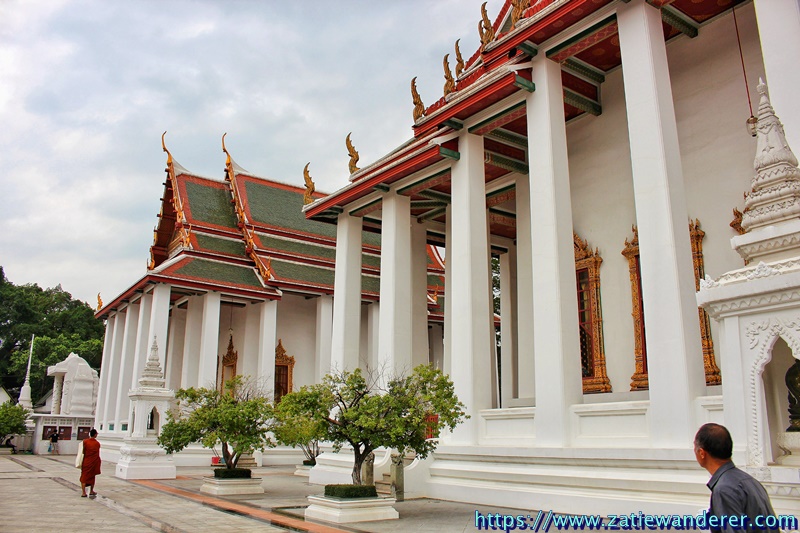
A little bit about the history of Wat and its surroundings.
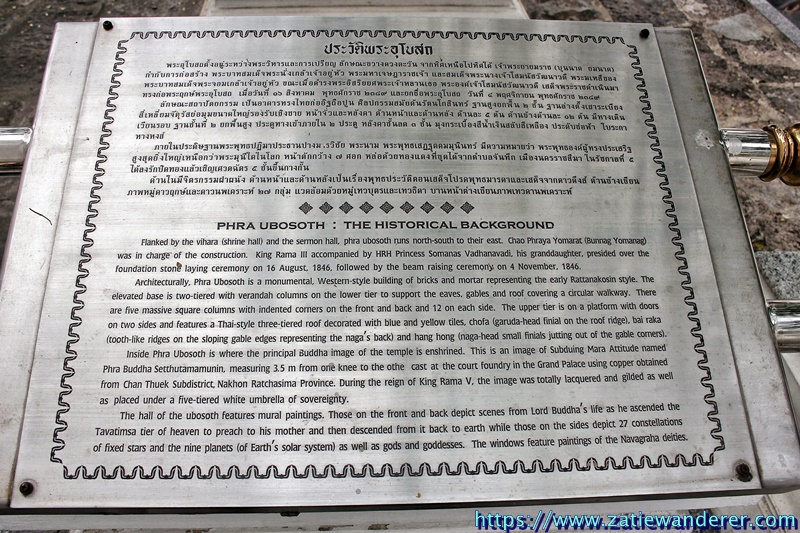
It was almost 1.05pm and we headed to the junction earlier which was to Pom Mahakan.
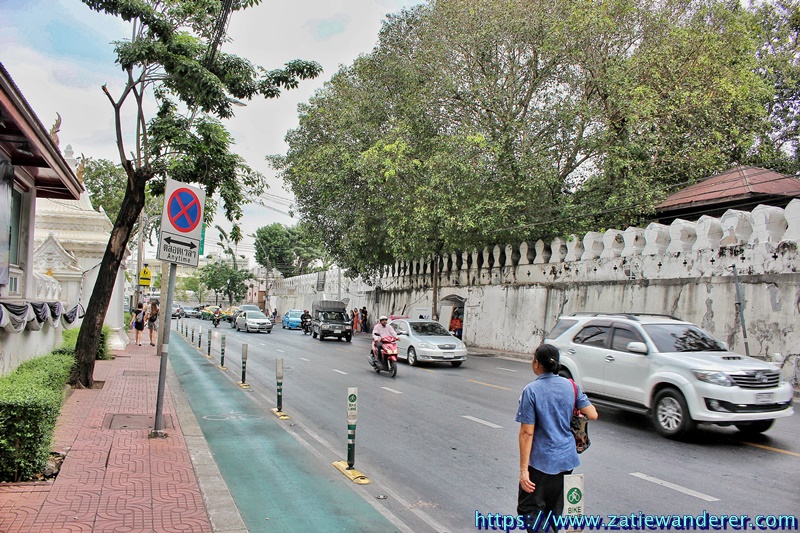
After crossing the road, we surveyed the surrounding area.
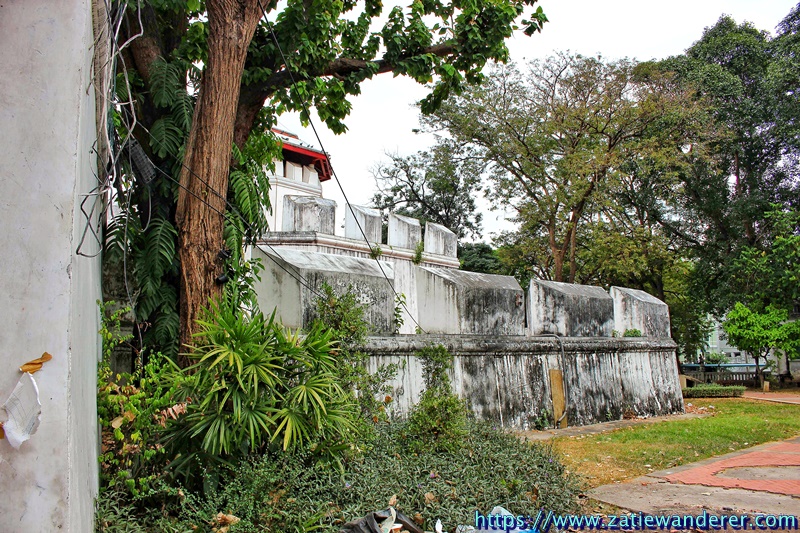
Pom Mahakan is a fort. When we came here, it was closed because it was in the process of being repaired. It was originally built in 1783 during the reign of King Rama III and is now 236 years old. The people who lived in this fort were the nobles because they wanted to live close to their King.
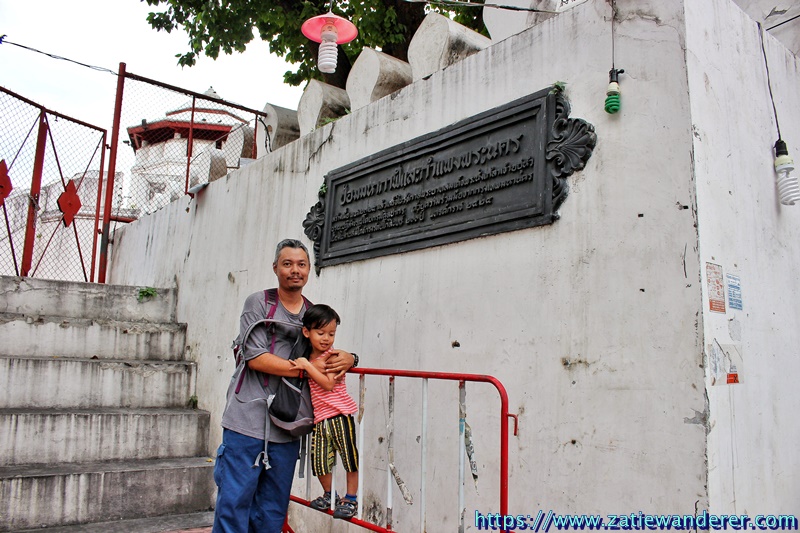
Since there was nothing to see at Pom Mahakan, so we gradually headed elsewhere. This is from the earlier direction, namely the Democracy Monument.

And this is the opposite road leading to another Wat.
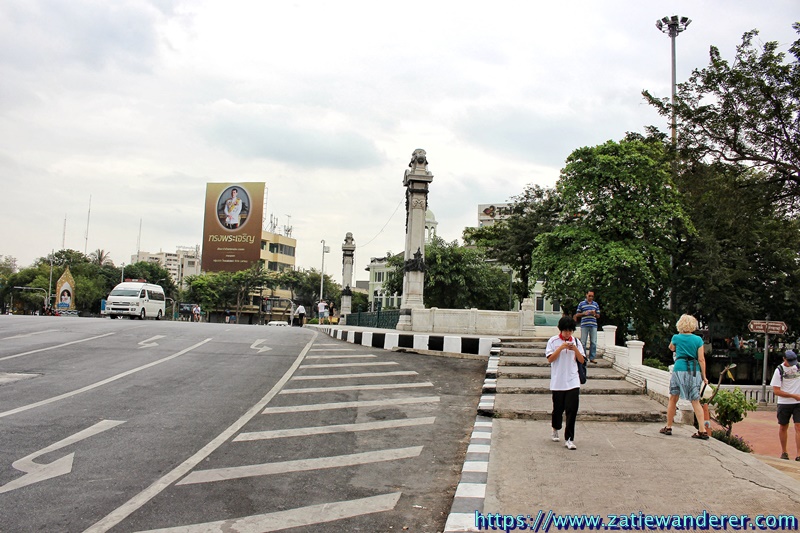
We did not miss taking pictures in front of the fort which is an iconic view of the fort and should be seen from the front of the main road.
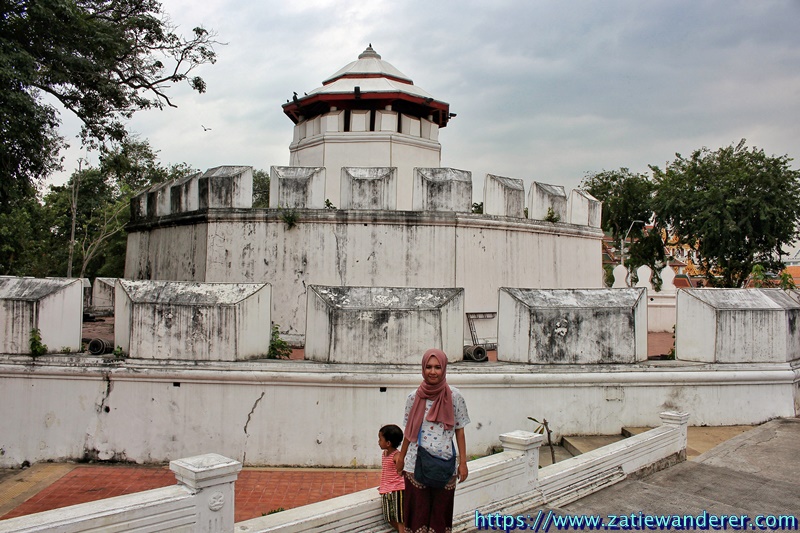
Let’s follow our journey to The Golden Mountain!





Leave a Reply